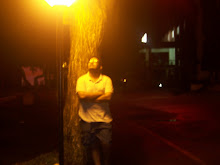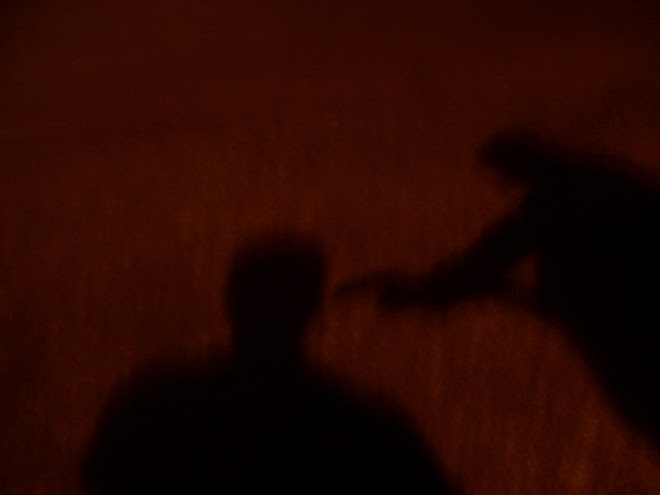

Last year I was walking through Dharamsala, the Tibetan hill station that is home to the Dalai Lama and about a hundred thousand skuzzy spiritual seeking tourists, when I ran into a stately older woman who asked me to sit down for a cup of tea. She was a visitor to India and wanted to talk to someone about a shocking discovery she had just made.
"When I walk down the street I see a lot of men holding hands. In the west homosexuality is so taboo, but it is refreshing to see it out in the open here," she said in obvious awe.
Obviously this woman had never read the hundreds of news stories of gay people being exiled form their communities, doused with kerosene, or beaten within an inch of their lives when discovered. She hadn't even seen Deepa Mehta's movie Fire which was causing a stir at the time of it’s release. I set her right that holding hands in India is just a sign of friendship.
A few days ago I was going through this column in a newspaper which said STDs on the rise in central jail. According to a four-year study it turns out that 30% of inmates have some sort of STD and that many are infected with HIV. 


 The article states they had multiple sex partners, and may have shared needles. The article ignored the elephant in the room. The newspaper wouldn't even mention that the STDs were
The article states they had multiple sex partners, and may have shared needles. The article ignored the elephant in the room. The newspaper wouldn't even mention that the STDs were being spread through gay sex. In fact, most media outlets in India completely ignore the gay culture in major metros across this country. It is as if the media has the exact opposite problem as the woman I met in Dharamsala: where she sees homosexuality everywhere, the media pretends it doesn't exist.
being spread through gay sex. In fact, most media outlets in India completely ignore the gay culture in major metros across this country. It is as if the media has the exact opposite problem as the woman I met in Dharamsala: where she sees homosexuality everywhere, the media pretends it doesn't exist.
Good Morning Ma’am and my dear friend, my topic for this speech is ‘Homosexuality’. Love it or hate it but you can’t ignore it... as it stand Homosexuality does exist in India.
Homosexuality in India, despite having an ancient history, is still considered a taboo subject, by both Indian civil society and the government of India. Homosexuality is also criminalised, due to provisions against "unnatural sex" and sodomy, under Section 377 of the Indian Penal Code (IPC). Many interpretations of Islam, India's second largest religion, vehemenently condemn homosexuality. In recent years, both due to liberal attitudes and the need to control HIV/AIDS, several Non-profit organisations and the planning commission of India have all demanded legalisation or at least de-criminalisation of homosexuality and acceptance, tolerance and equality for lesbian, gay, bisexual, and transgendered people.
The history of homosexuality in India date backs to times immemorial. The Manusmriti, which lists the oldest codes of conduct that were proposed to be followed by a Hindu, do include homosexual practices, but only as something to be regulated. Though homosexuality was considered a part of sexual practices, it was not always well accepted. There were punishments prescribed for homosexual behaviour. For instance, if a mature woman was found having sexual relations with a young woman (virgin), her "head should be shaved immediately or two of her fingers should be cut off, and she should be made to ride on a donkey." However, if two young women (virgins) have sex, each "must be fined two hundred (panas), pay the double of her (nuptial) fee, and receive ten (lashes with a) rod."
The punishment for male offenders was that if two unmarried males are found in a sexual union it was traditionally said to be lost of caste. If a man was married and had union with another man he would have to perform the Samtapana Krikkhra. This meant he would have to drink a mixture of "the urine of cows, cow dung, milk, sour milk, clarified butter, and a decoction of Kusa-grass, and fast during one day and night.”
The Rig Veda, sculptures and vestiges depict sexual acts between women as revelations of a feminine world where sexuality was based on pleasure and fertility. In the Kama Sutra sex acts involving homosexuality are permitted in some castes but not in others. The recent book "Same-Sex Love in India: Readings from Literature and History" by Ruth Vanita and Saleem Kidwai analyses the history of homosexual behaviour in India, drawing from Hindu, Buddhist, Muslim, and modern fictional traditions. In the preface to the book, Ruth Vanita says that the book 'traces the history of ideas in Indian writing traditions about love between women and love between men who are not biologically related.' The book has an impressive collection of stories from the Mahabharata, Panchatantra, Kamasutra, Shiv Purana, Krittivasa Ramayana, Skanda Purana, Amir Khusro, Baburnama, and a variety of modern Indian material.
Homosexual relations are technically still a crime in India under an old British era statute dating from 1860 called Section 377 of the Indian Penal Code. But as any other crime, Convictions are extremely rare, and in the last twenty years there have been no convictions for homosexual relations in India.
In September 2006, Nobel Laureate Amartya Sen and acclaimed writer Vikram Seth came together with scores of other prominent Indians in public life to publicly demand this change in the legal regime. The open letter demands that 'In the name of humanity and of our Constitution, this cruel and discriminatory law should be struck down.'
The Indian Prime Minister Manmohan Singh was asked by a journalist, on the visit of the Candaian prime minister, what he thought of the new law allowing gay marriage in Canada. His reply was that "there would not be much appreciation for a law like that in India," and he went on to talk about how they were culturally very different societies.
Gay marriage is not a debated issue in India, a country where homosexuality is still technically illegal. Except for a few sporadic incidents, homosexuality or same-sex marriages are almost never discussed in public though the situation has changed significantly.
There is a vibrant, if largely underground gay nightlife in cities such as Mumbai, Delhi, Hyderabad, and Bangalore, including discos and nightclubs. The police used to harass homosexuals in the past but things have changed dramatically in the last six years. The situation in smaller cities is more complicated, while there are no gay discos or parties, there are however cruising areas in all major cities. These cruising places are still occasionally monitored by the police, especially in North India but the biggest threat seems to come from blackmailers and hustlers.
Moving onto the entertainment industry, the country's best-known director Karan Johar is widely rumored to have ongoing relationships with lead actors Shah Rukh Khan and John Abraham. Johar has made some small attempts to put some positive references to homosexuality in his movies and featured a short kiss between two men on the streets of New York in his film Kal Ho Na Ho.
Otherwise the media sticks to demonizing homosexuality. Newspapers are happy to print stories of gay people being punished by the local community. And the majority of films that have gay characters--like Girlfriend--cast them as villains and see that they die painful deaths.
India has a problem addressing all forms of sexuality. Extramarital affairs are commonplace, and though no one wants to say that sex happens before marriage, droves of teenage girls come home pregnant every day because they never received sex education. Homosexuality is demonized in the media and everyday discourse, and millions of people are forced into arranged heterosexual marriages while they clearly lust after something else.
Come to think of it, the woman in Dharmsala may have been onto something. While holding hands is a way to express friendship here, it is the one avenue for gays to come out into the open without feeling attacked by the world around them.







 The article states they had multiple sex partners, and may have shared needles. The article ignored the elephant in the room. The newspaper wouldn't even mention that the STDs were
The article states they had multiple sex partners, and may have shared needles. The article ignored the elephant in the room. The newspaper wouldn't even mention that the STDs were being spread through gay sex. In fact, most media outlets in India completely ignore the gay culture in major metros across this country. It is as if the media has the exact opposite problem as the woman I met in Dharamsala: where she sees homosexuality everywhere, the media pretends it doesn't exist.
being spread through gay sex. In fact, most media outlets in India completely ignore the gay culture in major metros across this country. It is as if the media has the exact opposite problem as the woman I met in Dharamsala: where she sees homosexuality everywhere, the media pretends it doesn't exist. 




